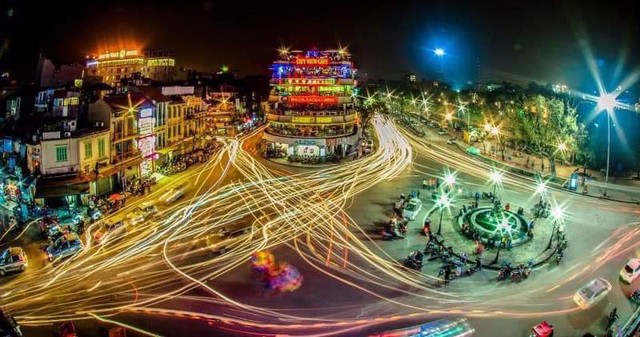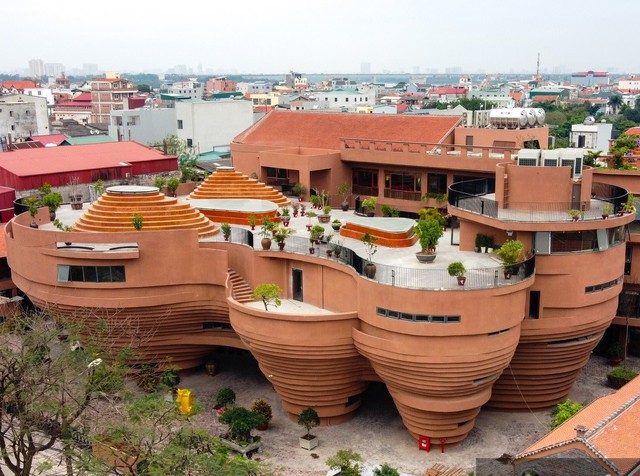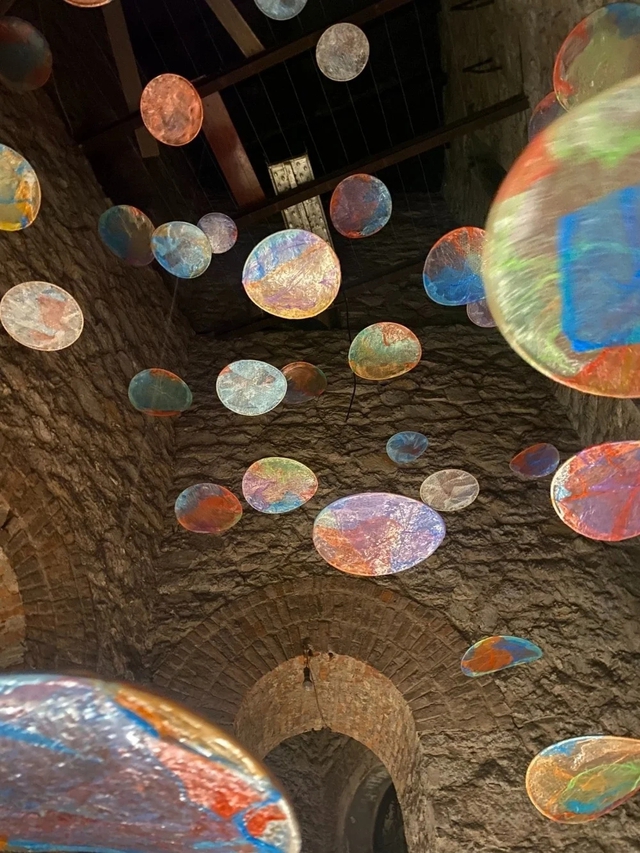Five-year review of creative city
VGP - Ha Noi was designated part of the UNESCO Creative Cities Network on October 30, 2019, marking an important step in the sustainable development journey of the thousand-year-old capital.

Hoan Kiem Lake Walking Street
Joining this network not only helps Ha Noi promote culture and artistic creativity but also promotes creative industries, thereby creating opportunities for international cooperation and enhancing the city's position on the world map.
The UNESCO Creative Cities Network was established in 2004 to connect cities with creative potential and promote international cooperation in cultural development, heritage preservation and economic development through creative industries.
UNESCO has identified seven key creative areas that cities can apply to, including culinary arts, crafts and folk arts, design, cinema, literature, media arts, and music.
The network aims to promote cooperation among member cities, thereby supporting sustainable economic development and protecting and promoting unique cultural values. Cities in the network can share projects, initiatives, and innovative approaches to address global challenges such as urban sprawl, climate change, and social inequality.
By joining the network, cities not only receive technical and resource support from UNESCO in implementing creative projects but also have the opportunity to promote tourism and promote their image, access funding resources and international cooperation, and learn valuable experiences from other creative cities around the world.
To date, the network has more than 300 cities from all continents around the world with different income levels and populations, all committed to putting creativity and the creative economy at the core of urban development to move towards safe, integrated and sustainable cities.

The unique appearance of Bat Trang Pottery Museum (Source: Collected)
Strong call for innovation and creativity
According to Associate Professor Bui Hoai Son, member of the National Assembly Committee for Culture and Education, the UNESCO Creative Cities Network is not only a title but also a strong call for innovation and creativity.
In a rapidly changing world, the honoured cities are constantly discovering and affirming themselves as the centres of creativity, where new ideas continuously emerge and grow.
"UNESCO encourages cities to not only seek economic opportunities but also build strong and vibrant communities. By sharing the best experiences and practices, cities in the network open a new path for global cooperation, mutual learning and sustainable development. Each city, with its own unique cultural heritage, not only preserves but also revives cultural values, making them a source of inspiration for future generations," emphasised Associate Professor Bui Hoai Son.
Ha Noi became the 246th city to join the UNESCO Creative Cities Network in 2019 in the field of design, one of the important elements of the capital city's urban and cultural development strategy.

The space inside Hang Dau Water Tower
Creative design - a strategic move
Ha Noi has long been known as an important political, economic, cultural and educational centre of the country, a place that preserves traditional values while also being the source of many new creative trends.
The thousand-year-old capital is famous for its rich heritage, including Hoan Kiem Lake and the Temple of Literature, along with traditional craft villages such as Bat Trang ceramics and Van Phuc silk, the performing arts of cheo, tuong, ca tru, and distinctive traditional customs.
These cultural heritages have contributed to creating the image of an ancient but dynamic and creative capital city of Ha Noi.
However, the rapid development of urbanisation and globalisation poses challenges in maintaining cultural identity, preserving heritage, and balancing tradition with modernity.
The city recognises the need for a new development strategy to preserve cultural values and promote creativity in new fields. Therefore, participating in UNESCO's Creative Cities Network is an ideal choice to connect Ha Noi with other creative cities around the world.
Joining UNESCO's Creative Cities Network was a strategic move that has helped Ha Noi not only preserve its heritage but also further promote its creative industries. As someone directly involved in the preparation of Ha Noi's application dossier at that time, Associate Professor Dr Bui Hoai Son stated that becoming part of the network is not a simple process. For UNESCO recognition, Ha Noi had to undergo a meticulous preparation process, emphasising the city's creative potential and development orientation.
Vietnamese agencies have considerable experience in submitting applications to UNESCO in the field of intangible cultural heritage: representative dossiers and those needing urgent protection. However, executing the creative city application is a different story; Viet Nam has never submitted such a file before. Therefore, similar applications from countries like the Republic of Korea, Singapore, and China were analysed to gain insights.
This led to another challenge: What creative city model would Ha Noi follow among the seven categories set by UNESCO, including handicrafts and folk arts, design, film, gastronomy, literature, multimedia arts, and music? Instead of choosing an easily achievable direction, Associate Professor Dr Bui Hoai Son and several experts opted for a different approach to create uniqueness for Ha Noi and position the capital's brand.
"The "City for Peace" title has been the pride of Ha Noi for the past 20 years. Now is the time for us to gain another title to honour the city. This title will not only be a source of pride, it will also guide the development of the capital in the coming years. Therefore, a category that covers many areas of the dynamic capital is better than an easy-to-achieve category like handicrafts and folk arts," Associate Professor Dr Bui Hoai Son analysed. And the category that he preferred is design.
The Standing Member of the National Assembly's Committee on Culture and Education emphasised that design can be found everywhere, from cinema, music and architecture to smart cities, or even handicrafts, folk arts, and cuisine. The experiences of capitals around the world also show similar options. When there are too many options for Ha Noi, design will be the most suitable one.
"At that time, the proposal received enthusiastic agreement and support from the city's authorities, the UNESCO Office in Ha Noi, the Viet Nam National Institute of Culture and Arts Studies, and international experts," Associate Professor, Dr Bui Hoai Son said.
According to Jonathan Wallace Baker, UNESCO Representative in Viet Nam, when Ha Noi opted for the design criteria, Ha Noi sent the message that design is closely linked to all cultural fields, cultural industries and creative industries. In those industries, we all see creativity and unique features of design types.
I think this is the absolutely correct choice for Ha Noi in building the application dossier. With its rich heritage shown in the dossier along with its commitments and action programmes, Ha Noi completely convinced the appraisal council.
Great potential to develop the cultural industry and creative industry
Located in a strong intersection between indigenous culture and Eastern and Western cultures, inheriting the heritage and continuing the source of the thousand-year-old Thang Long creative city, the capital Ha Noi possesses great potential to develop the cultural industry and creative industry, especially in the field of design.
Creativity lies in the urban architectural infrastructure and the cultural infrastructure, with 5,922 historical-cultural relics and a network of 1,350 different craft villages. Ha Noi's creative potential is always ready to be unleashed, creating its own unique identities, helping Ha Noi preserve its traditions, shape the present, and move towards the future.
In terms of urban design, Ha Noi can combine the preservation of architectural heritage with the development of creative public spaces. Projects such as renovating the Hoan Kiem Lake walking street and creating public cultural spaces have demonstrated that the city is focusing on the creative factor in urban development.
In terms of traditional craft villages, Ha Noi is famous for hundreds of traditional craft villages such as Bat Trang ceramics and Van Phuc silk. Combining traditional art with modern designs helps to enhance the value of products, while creating new creative products.
In terms of urban design, Ha Noi can combine the preservation of architectural heritage with the development of creative public spaces. Projects such as renovating the Hoan Kiem Lake walking street and creating public cultural spaces have demonstrated that the city is focusing on the creative factor in urban development.
In terms of traditional craft villages, Ha Noi is famous for hundreds of traditional craft villages such as Bat Trang ceramics and Van Phuc silk. Combining traditional art with modern designs helps to enhance the value of products, while creating new creative products.
First and foremost, Ha Noi has the chance to connect with hundreds of other creative cities around the world, sharing its valuable experiences and successful lessons with friends in this network. In return, Ha Noi can also learn from the experiences of other members through participation in the global forums of UNESCO's Creative Cities Network, such as the forum in Braga, Portugal, last July.Jonathan Wallace Baker, UNESCO's Representative to Viet Nam Additionally, by joining the network, Ha Noi will develop a framework of actions to implement its commitments to the network, aimed at promoting culture, cultural industries, and creativity.
"Ha Noi has done an excellent job of building and executing its action programmes since officially becoming a member of this network in 2019," remarked the UNESCO's Representative to Viet Nam, expressing hope that Ha Noi will have even more opportunities to promote its culture, creativity, and unique architecture in the coming years.
Joining UNESCO's Creative Cities Network is an important first step towards enhancing Ha Noi's status and creating a more attractive image for the city. The vision and brand of a creative city in design will serve as a driving force for Ha Noi, helping it attract large-scale investment, fuel urban development, and foster education and cultural events in line with a sustainable development vision./.

